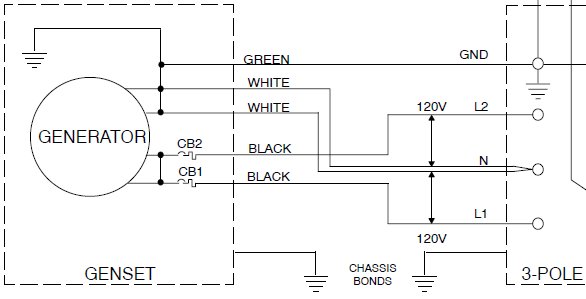Vulcan Rider wrote:
road-runner wrote:
Anyone who doesn't know the answers to the above questions, as a previous post "politely" stated:
"You are out of your league here".
Hints: They are not tied together (which would be a NEC violation), and GFIs do not need a ground to work.
Sure be an ass; that really contributes positively to the discussion.
I readily admit little to no experience or knowledge with generator systems that are not a part of the power grid and am asking for information.
IF.....the white and ground wires are not connected together at a central distribution box, then where IS the "ground" wire connected ....and to what ??
And yes I know that a GFI really detects a current flow in the third "ground" wire.....where there should be none but for that to happen it has to be connected to something somewhere. Maybe it would more properly called a "neutral fault" detector. But then, how would it detect a fault in the "neutral" if there IS NO neutral in a balanced AC feed ??
I may not know everything about generator systems but I have a REALLY good grasp of the basics and my BS detector is still going off.
put your attitude and tour BS detector aside and read what people are trying to get across here. I just can't get any clearer than say it once more..
It is a LAMP. It has no hot, no ground, no neutral... It is pure AC. The fact that it has a "hot" side and a "neutral" side BEFORE the lamp makes ZERO difference to the lamp. 2 pages ago you said "check for loose grounds".. Who cares? Call it what you want: a resistive load, an inductive load, etc. in this case a CFL, which has FAR more electronics in it than your diode BTW.. IT, whatever IT is is being fed by 2 wires. There is NO ground, no Hot. Just unreferrenced volts.
Since you want to sling credentials around.. I design and build TV and Radio Studios and Sound stages, 50kw transmitters, microwave sites, Satellite and ENG trucks and helicopters for a living all over the US and Puerto Rico. Prior to this 35 year stint I spent 5 years at GTE in the training department showing the field guys how a telephone network runs. I'm pretty sure I understand how to feed a light bulb.
Maybe someone else can give this a try.

